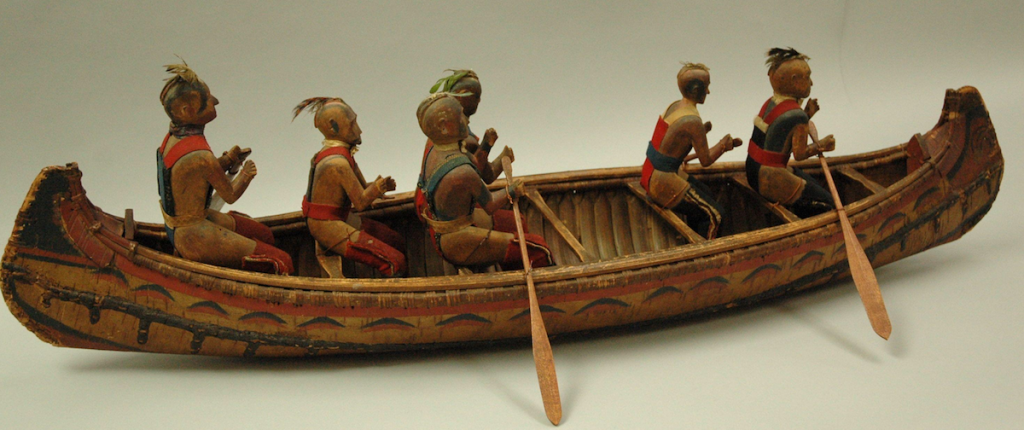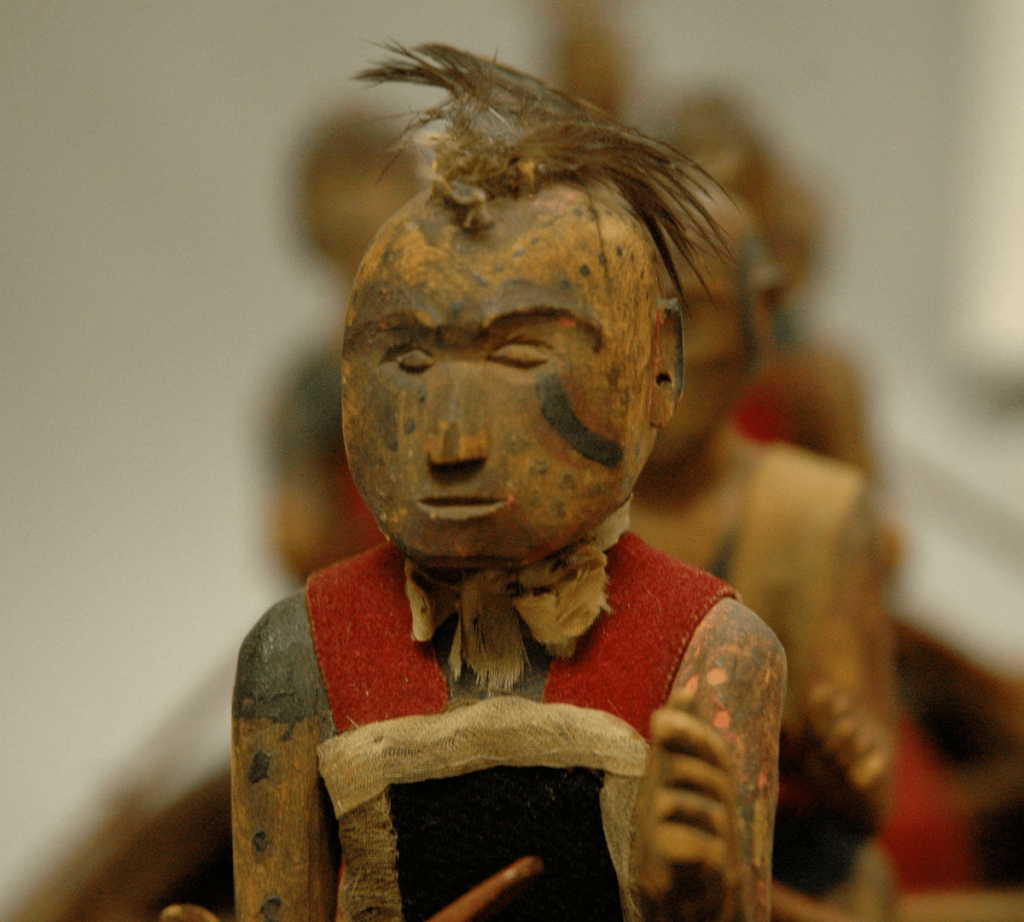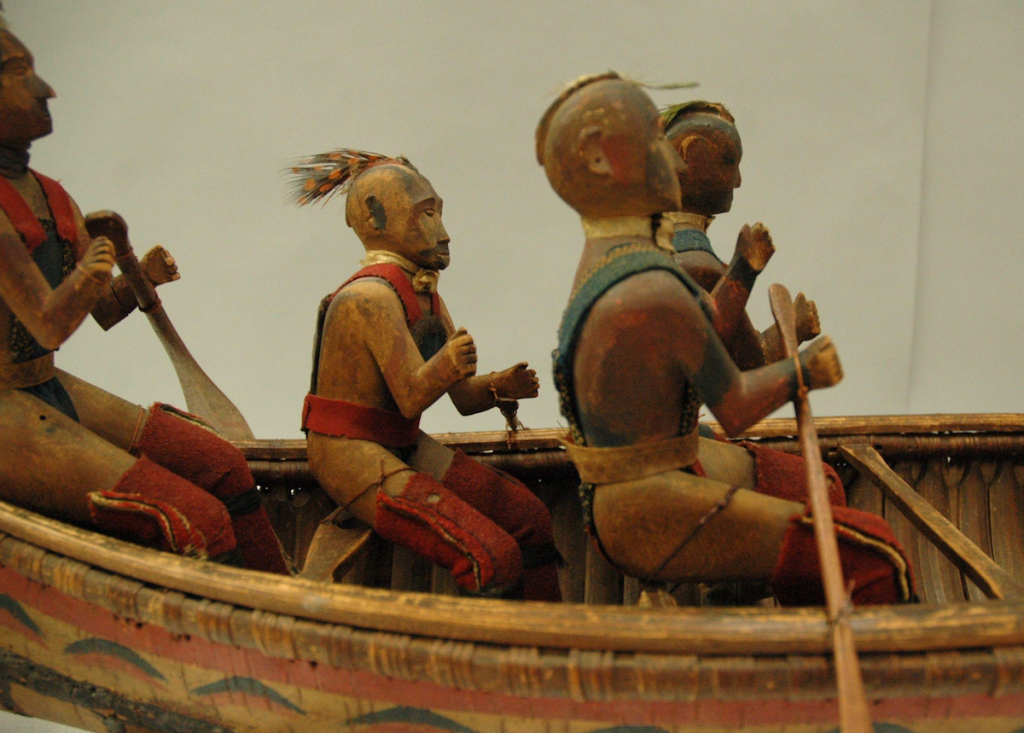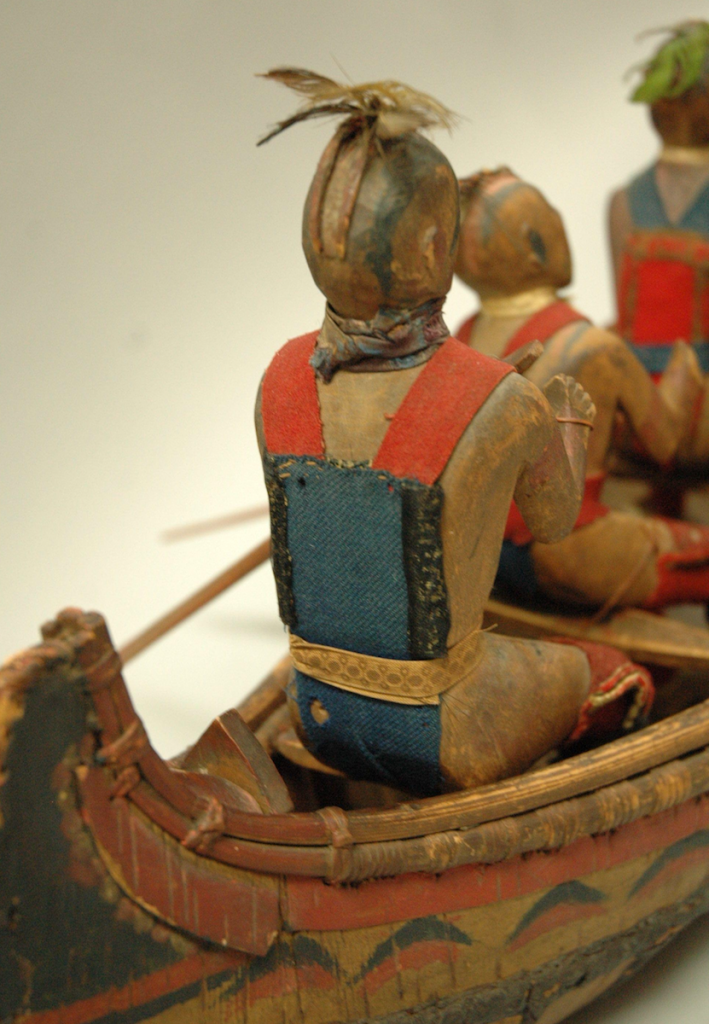A GRASAC Exhibit
Curated by Crystal Migwans (2013)
Additional interpretation and images provided by Alan Corbiere, compiled by Kate Higginson (2017)
Photos courtesy of GRASAC & the Canadian Museum of History (III-M-10 a-n)
This short exhibit presents four interpretations of Chief Assiginack’s Canoe, a notable birchbark miniature model canoe and figures carved by Chief Jean-Baptiste Assiginack between 1815 and 1827, that is now held in the collection of the Canadian Museum of History.

1) Birch Bark Canoe
As an expression of Great Lakes life, this object can be seen as representing a birch bark canoe:
The canoe was the most important form of transport in the Great Lakes region. Traditionally, a canoe was made from birch bark, with wooden splint crossbars, spruce root stitching, and pine pitch to seal the seams. Larger canoes, such as the one represented (in miniature) above, could carry many warriors or loads of trade goods, and still be light enough to easily portage between lakes and rivers.

2) Miniature
This object’s material form as a miniature is an important part of interpreting its cultural context:
Some miniatures, such as tiny clubs and cradleboards, were made to help children learn social roles and skills. These objects are a valuable source of information about woodlands lifestyles and objects. Other miniatures were made for trade, and were popular with tourists as a portable and accessible representation of an ‘exotic’ culture. Though these were considered trinkets by their European buyers, they provide insights into how Indigenous people represented themselves to white eyes. The object above is neither toy nor tourist item, but a sort of document (or monument) of a scene of war, specifically intended as a gift to the British. It shows the capacity of the miniature to communicate across cultures.

3) Diplomatic Gift
This object was created by someone specifically as a diplomatic gift and political message:
This miniature is an example of a diplomatic gift given by the Anishinaabe to the British. Diplomatic exchange of presents each year was part of affirming their continued relationship. This piece was created by Anishinaabe Chief Jean-Baptiste Assiginack, and depicts six of his fellow Chiefs who fought for the British in the War of 1812 and secured Canada against the Americans. They are dressed finely, seated in a painted war canoe, heading to battle. This canoe is perhaps meant to remind the British that the Anishinaabeg have kept up their end of the reciprocal relations of alliance, and are now expecting the British to stay true to theirs.

4) Anishinaabe Chiefs
The figures in the canoe represent specific Anishinaabe Chiefs, making it an important historical document:
The canoe is accompanied by a note on birchbark (since lost) naming each person represented: Chiefs Mokomanish, Blackbird, Cub Bear, Bird of Day, Clap of Thunder at Night, Crawfish, and Esh-quoi-can-nai-be. The figures representing the chiefs are carefully carved from wood, and wear war paint, feather headdresses, scarves, and wool leggings and vests. The wool vests and leggings would have been heavy attire for warriors going to war (as little as possible was worn), so this representation is perhaps taking some aesthetic liberties by showing the Chiefs in distinguished apparel.

